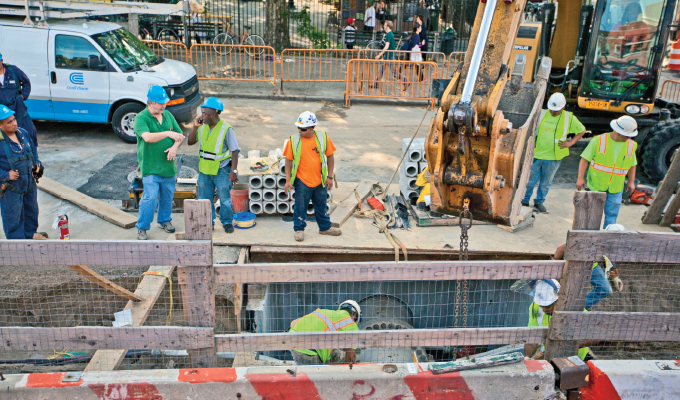Construction projects, even with the most detailed planning, face change orders as the work unfolds. Having timely access to the projects and change orders can aid in the process and minimize risk. For insight into reducing risk with a real-time change order log, the following Q&A with Cameron Page of Extracker offers a solution to consider.
MCS: With the business climate constantly changing, how important is it for general contractors to reduce risks on a project?
PAGE:Reducing risk is more important than ever. Construction is quickly transitioning from a rapid bust cycle into a boom cycle. Everyone living through these challenges—labor shortages, supply chain bottlenecks, rising costs—is witnessing first-hand the impact of not managing risk before or during major economic and construction cycles.
If general contractors can’t plan ahead for anticipated changes and associated costs, they leave themselves at risk of going over budget. At the very least, mismanaging changes to project costs can result in damaged relationships between trade partners and owners.
As this risk accumulates, it broadly affects the whole market and can damage the industry and reduce the overall capacity to build. Our industry needs financially strong companies, from subs to owners, to build the future ahead.
MCS: What are some areas of focus for contractors when it comes to reducing risks? Are risks more prevalent in some areas of a project than others? Are there key areas that a general contractor would need to focus their efforts on?
PAGE: Even before the current volatility and risks, design issues and the associated change orders that come with it are some of the biggest causes of financial risk to a project. As the industry moves toward more collaborative delivery methods, and contractors are brought on board before design is complete, large volumes of change orders become inevitable.
A cloud-based Change Order Request log gives general contractors a real-time, transparent view with their trade partners and makes it easier to update clients. Having a communication process for change orders is imperative to stay on top of project costs and reduce risk before things get out of hand.
MCS: Change orders are common when it comes to a project. What are some methods or measures contractors can take to help minimize or eliminate risks?
PAGE: The first step is to take risk out of your email inbox and implement a solution that streamlines the change order process between trade partners. By reducing the chances that CORs get lost, are received late, or get stuck submitting incomplete Change Orders to owners, contractors can eliminate the surprises of managing change orders with paper, email, and Excel spreadsheets.
For collaborative delivery methods, contractors can minimize risks by partnering with key subcontractors during the design phase for more accurate pricing, and in some cases, to lock in pricing before escalation occurs.
MCS: How big of a role does accurate forecasting play in reducing potential errors or risks?
PAGE: Accurate forecasting is a major factor in reducing cost risk, especially if a contractor’s process includes communicating through email and reconciling with a static PDF or Excel log. When communicating Change Order Requests through email, your forecast can easily be out of date with what is floating in your team’s inbox. Contractors can reduce risk and identify forecasting inconsistencies or overruns in real time by requiring trade partners to submit any potential CORs through a cloud-based, structured system.
MCS: With labor shortage being a real concern in the industry, how can minimizing risks offset the need for more workers?
PAGE: The labor shortage is reinforcing the need for two urgent changes in construction. The first is making your current workers more efficient both in the office and in the field. This largely includes implementing a massive new toolbox of digital solutions and communication apps that increase productivity without increasing labor hours. The key is to have these tools easy to use and easy to onboard new employees.
The second is doing a better job of closing out the job and moving to the next project. During the course of a project, transparency and real-time communication allow all stakeholders to complete work and get paid faster. When everyone works together, there is less time and costs wasted on disputes. Ultimately, this means companies can function more efficiently with fewer employees or can afford to pay more as labor costs increase.
Because change orders are a major cost risk to construction projects, general contractors and subcontractors spend hours of administrative time each week keeping track of them. Embracing a change order communication platform can save an average of five hours per week per FTE, easing the strain on the already-limited project resources.
CLOSING THOUGHT
A common contributor to driving Change Order Risk in our industry is tracking field-directed extra work through dated methods. Most commonly this is done on carbon copy Time and Material Tags/Tickets/Slips that document the labor, material and equipment along with the scope of work performed. By having these documents on paper, it can lead to slow processing time, hard to read documentation, or even lost documentation. From a subcontractor’s perspective, this means lost revenue. For a general contractor, however, this can represent surprise costs that can completely break the project’s budget or ruin trust between companies.
For More Information:
Cameron Page is the founder and CEO of Extracker, a construction software company that gives GCs a shared digital Change Order log where they can login and see their complete cost exposure, in real time, from all subcontractors. For more, visit www.extracker.com.
Modern Contractor Solutions, August 2021
Did you enjoy this article?
Subscribe to the FREE Digital Edition of Modern Contractor Solutions magazine.



